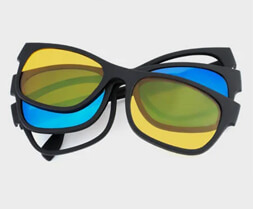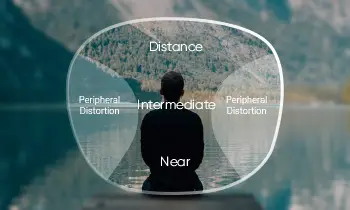Smoking is one of the most common phenomena in life, and many people feel that they can't quit as soon as they have smoked. However, the health risks of smoking usually only make people think of respiratory diseases. Still, few people will know that smoking can also produce some damage to our eyes, and this is not alarming.
According to incomplete statistics, nearly 5% of patients examined for unexplained vision loss exhibit typical tobacco toxic amblyopia visual field changes.
Main manifestations of toxic tobacco amblyopia
- Visual impairment: difficulty seeing objects and difficulty correcting them with prescription eyeglasses. As the vision loss gradually worsens, at a certain point, the visual acuity is even only 20/200.
- Photophobia: neutrophilic tobacco vulnerability develops slowly and is easily overlooked. Instead of seeing objects clearly in bright light, it may cause blindness in advanced and severe cases.
- Visual field change: in the early stage, a dumbbell-shaped or round black shadow appears in the middle of the visual field, and in the later stage, the visual field shrinks, and objects are blurred around when viewed.
Eye diseases caused by smoking
Dry eyes: Dry eyes are initially a syndrome caused by many factors. A survey found that people who smoke and are often in smoky environments are far more likely to get dry eyes than the general population.
It is also a common cause of dry eyes because the long-term chronic irritation of the eyelids by smoke can lead to dysfunction of the lid glands, resulting in abnormal oil secretion and rapid evaporation of water from the eye surface.
Cataracts: According to a survey, 20% of cataract patients are associated with long-term smoking. And people who smoke more than 20 cigarettes a day are two times more likely to develop cataracts than non-smokers.
Glaucoma: Smoking can cause an increase in intraocular pressure, which is especially noticeable in patients with glaucoma, who already have high intraocular pressure. When they smoke, the pressure gets even more heightened.
Amblyopia: First, the body's blood oxygen drops when smoking, and the retina becomes ischemic. In the long run, the optic nerve fibers degenerate, and the macula of the retina atrophies; Secondly, tobacco burning produces smoke tar will lead to a decline in the body's vitamin B12 content, and vitamin B12 is an essential nutrient to maintain the normal function of the optic nerve. In these two combined effects, smokers' vision loss occurs as toxic smoke amblyopia and smoke toxic optic nerve atrophy, and in severe cases, can be blind.
Chronic conjunctivitis: Long-term smoking will direct stimulation of the conjunctiva which can cause vasodilation of the conjunctiva, and lead to chronic conjunctivitis.
So, for the sake of your eyes, it's better not to smoke.


































